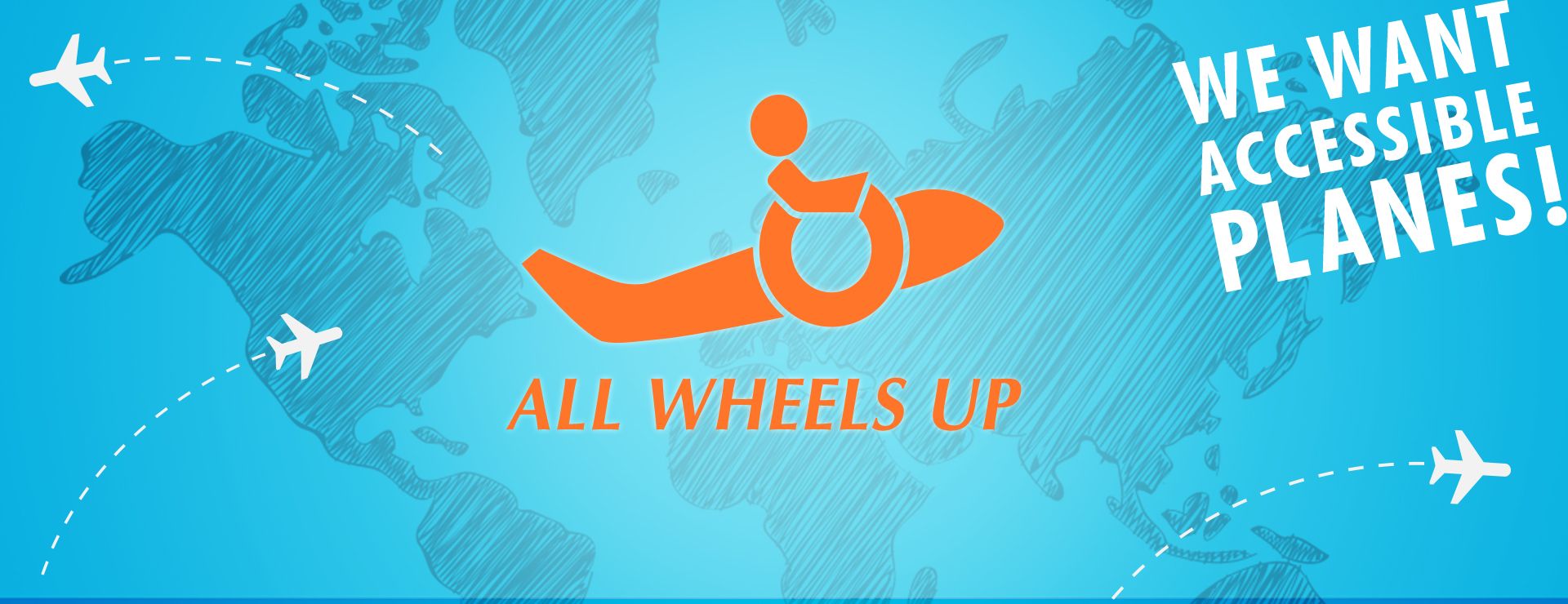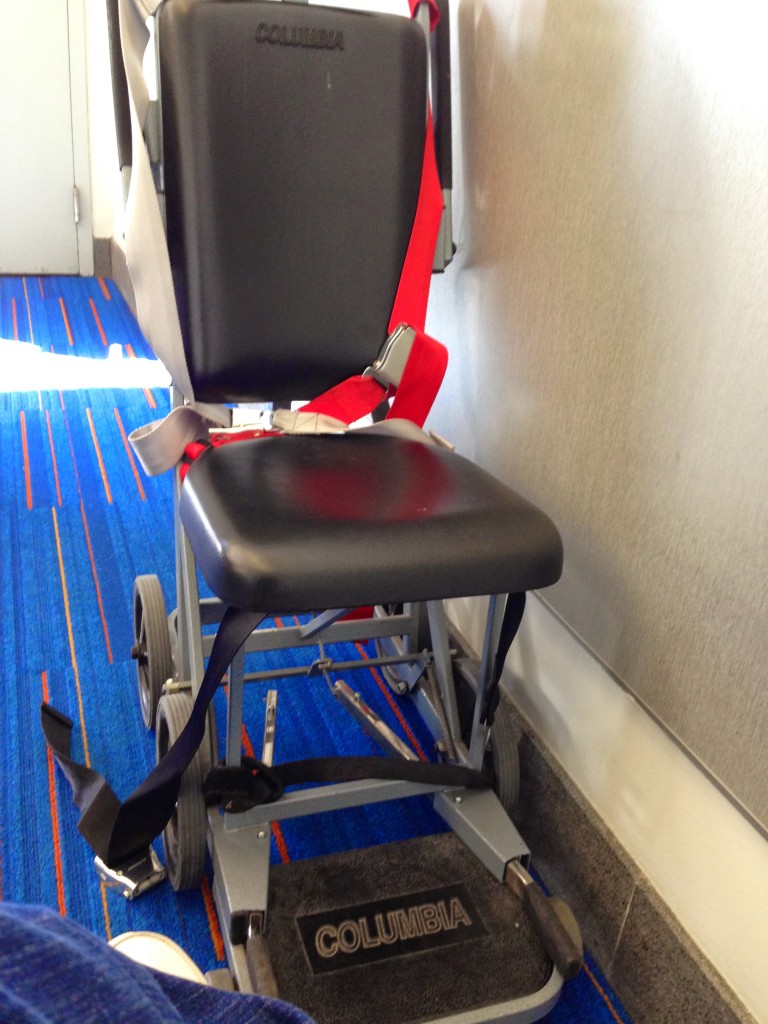Traveling on an Airplane with a Wheelchair is an incredibly difficult process right now and so we created this guide to help people understand how it can be done. We are going to walk through all the steps for people of all abilities and include images and videos of the process.
This is written for Power Chair users or non folding Manual Wheelchair users. If you have a Manual Folding Wheelchair, they have a closet to store it on the plane.
We are working hard on Accessible Air Travel and would greatly appreciate any donations.
After purchasing your tickets in advance and calling the airline 24 hours before your flight letting them know you will fly with a Wheelchair, You have to first make your way to the terminal of your flight. You can either drive yourself and keep your car in the long term parking, have someone drop you off, arrange an Accessible Taxi to drop you off, or even take the subway in some places. Make sure to leave 2 or 3 hours before your flight if you can.
Once you arrive at the proper terminal, you have to get your boarding pass and check any luggage. We highly recommend only taking luggage as carry on. Checking luggage is expensive, very annoying once you arrive, and in many cases gets lost.
You can print your boarding pass at the kiosks, print it out at home beforehand, or have it on your phone if you download the app of the airline you will be flying with. We highly recommend having your boarding pass on your phone because it is environmentally friendly, it is scanned at the gate just like for movie theaters, it is quicker because you can go right to the TSA check, and, if you cannot use a touch kiosk, it can be an even more accessible solution.
You have to now make your way to the TSA check area. The agents will tell you where you need to go. Make sure to remove the backpack of your wheelchair and put it on the tray of the scanner. They will direct you to the side where they wave the metal detector wand over you and use a swab that looks for any dangerous chemicals on your wheelchair. They will do the pat down too and ask you to learn forward or to the side to check the back of your wheelchair. Just let them do their jobs and let them know about any concerns you might have. It will be over before you know it.
Once you go through the TSA check area, you now need to get to your gate. If the crew for your flight is already there, tell them you will be flying with your wheelchair, want to pre-board, and you will need the transfer seat when the plane is ready.
Ask for the sliding board if you will need it to transfer. You can bring a transfer belt or whatever you use to be transferred. Everybody has their own transfer abilities so this depends on your needs.
Before you go in the transfer seat, make sure to take off the headrest, joystick, and screen off your wheelchair. Before the flight, practice taking these off at home so whoever is flying with you knows how to do it.
Hopefully you have a wheelchair where the joystick and screen are one piece and you can easily remove it. If you cannot remove the joystick or screen, make sure to bring bubble wrap to put around them because they are extremely valuable and you do not want to break them.
You will want to take off the cushion as well and put it on your seat in the airplane. This is extremely important for long flights and if you need your gel cushion to sit down comfortably.
The Wheelchair Backpack, Headrest, Joystick, and Screen you can take as carry on and put them in the overhead bins. The joystick and screen you should store in the backpack or other carry on luggage to be safe.
If you need a ventilator or other important equipment, you can take them on the airplane with you. Most equipment is allowed except oxygen tanks (you can rent oxygen tanks for arrival at the airport). You have to make sure it is approved and has enough battery for 150% of the estimated flight time. Most airlines have information about this on their websites.
Make sure to take a picture of your wheelchair before you let the baggage handlers take it so if there is any damage you can have a record of how you left it.
It is important to show them the manual release on your wheelchair. If they say it is too big for the cargo doors, which is only an issue for small planes, you can recline your wheelchair back so it can fit.
You can see how your wheelchair will be loaded on the plane in this video
Once you are on the transfer seat, they will wheel you on to the plane and your seat. Most seats armrests raise up by the way. We highly suggest getting an aisle seat because it is easier to transfer into. If possible try to get seats near the front of the plane, but keep in mind they do cost more on some airlines.
Transferring on the seat highly depends on your abilities. You can use the sliding board that comes with the transfer seat, ask the airline employees to help you (they are not legally required to help, but often offer to help), be carried by a family member, or use whatever equipment you brought from home like a transfer belt.
If you can self transfer or transfer with help, you can do that.
Once you are in the seat, enjoy the flight.
This amazing video from Curb Free with Cory Lee shows the process from a Go Pro
If you have limited strength, please make sure you have somebody next to you to hold you up during take off, landing, and turbulence. If you have limited hand or arm strength, you will need help putting headphones on or controlling the TV.
For dealing with bathroom issues, you have several options. You can wear a catheter or adult diaper, pee at home before you go and hold it in until you land or arrive at the hotel while avoiding drinking anything (We do not recommend doing this because it is very dangerous for your health), pee at the handicapped stall once you make it past the TSA check, or pee in a urinal bottle during the flight.
Soon Airplane Bathrooms will be Accessible to the Airplane Wheelchair.
Once you arrive at the destination, you will have to leave the plane last and wait for the baggage handlers to bring your wheelchair to the jetway. Make sure to let the flight attendants know you want your wheelchair and the transfer chair. This can take some time so try to avoid getting connecting flights whenever possible.
Hopefully your Wheelchair is in the same condition as you left it in and you can enjoy your trip. If anything is damaged, please file a complaint to the Airline and Department of Transportation. There are Complaint Resolution Officers at every airport and you can also file complaints by phone or electronically. The Airlines are liable for any damage and will pay for any repairs.
Our next article will focus on Transportation, finding Accessible Hotels, and bringing Durable Medical Equipment like Shower Chairs and Hoyer Lifts.
If you have any questions, please do not be afraid to ask us.



Comments are closed.